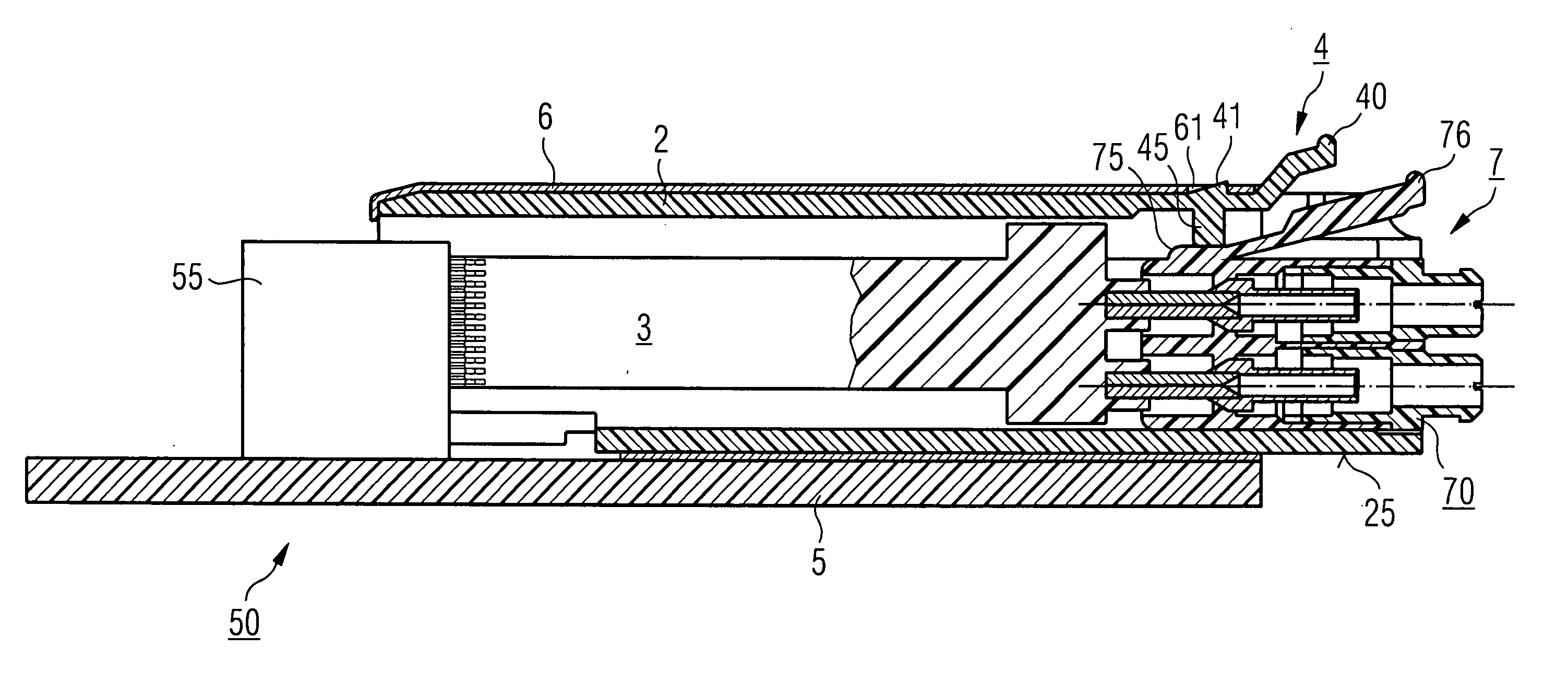Opto-electrical module for optical signals from at least two optical data channels for arranging on a main circuit board of a component assembly and opto-electrical component assembly
a technology of opto-electrical modules and optical signals, which is applied in the direction of optics, instruments, optical light guides, etc., can solve the problems of difficult realization of use in a transceiver module of sff or sfp design, inability to arrange on a central part of the module, and inability to achieve the opto-electronic performance of such bidirectional main circuit boards. achieve the effect of simple and cost-effective design
- Summary
- Abstract
- Description
- Claims
- Application Information
AI Technical Summary
Benefits of technology
Problems solved by technology
Method used
Image
Examples
Embodiment Construction
[0036] In the following description of the figures, the same reference symbols are used for the same structural parts throughout the figures.
[0037]FIG. 1 shows a sectional illustration of an optoelectronic module 1 arranged on a main circuit board 5 of an assembly 50 of an optical communication system. In this case, the main circuit board 5 of the assembly 50 of the optical communication system is advantageously arranged in, a rack cabinet (not illustrated here), the edge 56 of the main circuit board 5 pointing in the direction of the end side of the rack cabinet from which the assembly 50 is accessible.
[0038] The optoelectronic module 1 has a housing 2 having an underside 25, the underside 25 serving for the arrangement of the housing 2 or the optoelectronic module 1 on the main circuit board 5 of the assembly 50. In this case, the underside 25 of the housing 2 is in contact with the main circuit board 5 directly or indirectly, for example by arrangement on an intermediate elemen...
PUM
 Login to View More
Login to View More Abstract
Description
Claims
Application Information
 Login to View More
Login to View More - R&D
- Intellectual Property
- Life Sciences
- Materials
- Tech Scout
- Unparalleled Data Quality
- Higher Quality Content
- 60% Fewer Hallucinations
Browse by: Latest US Patents, China's latest patents, Technical Efficacy Thesaurus, Application Domain, Technology Topic, Popular Technical Reports.
© 2025 PatSnap. All rights reserved.Legal|Privacy policy|Modern Slavery Act Transparency Statement|Sitemap|About US| Contact US: help@patsnap.com



